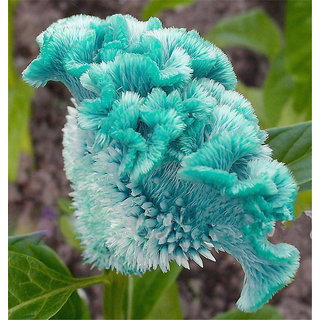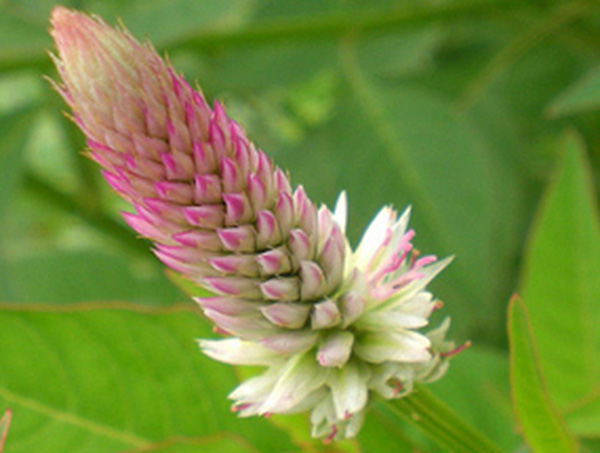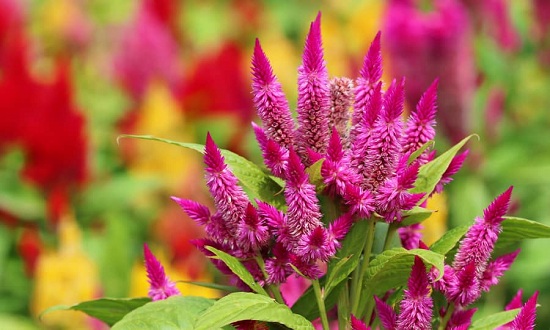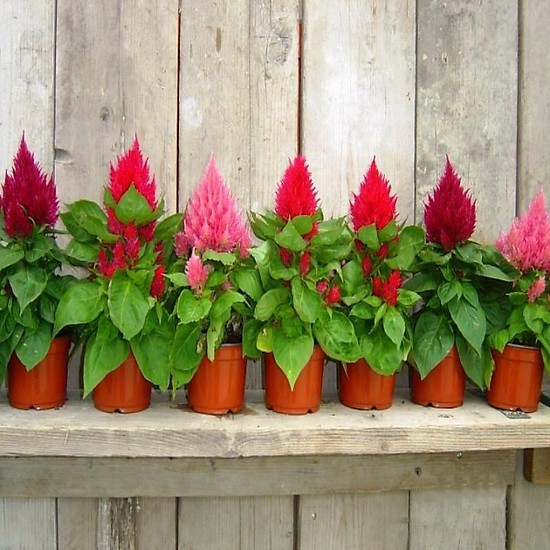Exploring the Unique Characteristics of the Crested Flower Tree Usually standing at a height of around 40 to 70 centimeters, the Crested Flower Tree is renowned for its distinctive features. Its name is derived from the resemblance of its flowers to a rooster’s comb. In some variations, the leaves of this shrub are adorned with hues of red or copper, adding an extra touch of beauty to its customary green color. These leaves grow to a length of 5-12 cm, displaying an ovate shape that resembles a lance.

In a vast array of colors, ranging from vivid reds to gentle pinks and rich purples to vibrant oranges, one can admire the enchanting crested blooms. These unique flowers can grow either in clustered formations, creating a delightful ball of color, or individually on each branch, adding a touch of elegance to any setting. Although these blooms grace us with their presence year-round, it is during the late winter and early spring when they truly reach their peak in terms of abundance and beauty. With their vibrant petals, these flowers have the remarkable ability to liven up any room they inhabit. The fruit of the crested flower tree is a fascinating sight, being simultaneously oval-shaped and round. Within this fruit, one can find 8-10 glossy black seeds, which further adds to its allure. These characteristics make the crested flower tree highly sought after for its aesthetic value, often cultivated with great care. To ensure the optimal growth of this marvelous plant, it thrives best in hot, humid, and brightly illuminated environments. It is essential to protect it from cold temperatures and avoid stagnant water, as these can be detrimental to its overall well-being. By providing the crested flower tree with the ideal conditions, one can witness its true beauty flourishing.

Dealing with the Crested Blossoms In nature, various types of cockatoo plants can be discovered, such as white crested cockles (also known as wild crested flowers), yellow crested cockles, red crested cockles, red phoenix tail crests, and many more.

Vietnam is home to an abundant variety of flowers, including those with white crests and others with red crests. These blooms are widely seen across the country, adding vibrance and beauty to the landscape.

Celosia argentea, a member of the amaranth family, is an exquisite flowering plant. It is commonly found in gardens and has a delicate appearance. The peak blooming period for this plant is during the spring and early summer. Reproduction is achieved through the use of seeds, with a single ounce of these plants containing an astonishing number of approximately 43,000 tiny seeds. Interestingly, not only the flowers but also the leaves of this plant can be consumed. In certain regions of Africa and Southeast Asia, Celosia argentea is cultivated as a vegetable crop.

The white crest plant is a type of perennial grass that has a straight and smooth stem with many branches. It typically reaches a height of 0.3 m to 2 m, although it rarely surpasses 1 m. The leaves of this plant grow in an alternating pattern and are about 8-10 cm long and 2-4 cm wide. They have a lanceolate shape, are completely intact, and have pointed tips and bases. Scientifically known as Celosia cristata L., the red crested cockatoo belongs to the Amaranthaceae family. It has various other names such as the red cockroach, the flowered millet, the first millet, and the red crested cockatoo. As a perennial grass, the red crest plant has a rigid stem and smooth branches. Its ovate leaves are pedunculated and terminate in a pointed tip. The plant produces red, yellow, or white flowers that grow on very short stalks, almost sessile, and end in wrinkled and flaring calyxes. The fruit of this plant is oval or globose in shape and contains 8-10 shiny black seeds. The planting of these trees is often done for aesthetic purposes.

The crested flower, also known as the cockroach tree, is highly sought after for both outdoor gardens and public parks. It is prized for its appealing appearance and low maintenance needs. Many individuals appreciate the beauty and charm that the crested flower adds to their surroundings. Additionally, during the Tet holiday, the crested plant is cultivated in containers and utilized as a decorative element to enhance the festive atmosphere. It is remarkable how this plant serves both ornamental and culinary purposes.

Crested cockles are a well-loved vegetable crop in Mexico, and their seeds are even used to create a tasty breakfast cereal. This grain, when combined with a sweetened solution, results in a dish commonly enjoyed in Mexican cuisine. In Nepal, there is a similarly popular breakfast cereal made from the seeds of crested cockles, known as Sattoo. The crested seeds are also utilized in the production of Chicha beer, a fermented beverage that is highly favored in Peru and Ecuador. Additionally, these seeds have medicinal properties and are used in herbal remedies. Both the seeds and blossoms of the plant are known for their ability to promote blood clotting and alleviate symptoms of dysentery.

The indigenous people of Ecuador believe that combining rum with boiled seeds can help cleanse the blood and regulate their menstrual cycles. The Cockroach tree, symbolizes modesty and depth despite its lack of extravagant beauty. The blooming crest signifies selflessness, noble-heartedness, and individuals who are willing to make sacrifices for the greater good. According to the principles of feng shui, displaying crest flowers in the home is believed to bring prosperity, harmony, and good luck. As a symbol of harmony and new beginnings, families traditionally buy many pots of red crested flowers between New Year and spring. Steps for growing a Cockroach tree: Crest flowers can be planted at any time of the year, but it’s best to harvest them in winter and spring due to the milder temperatures. When the plant reaches a height of around 6-7 cm, move it from the nursery bed to a container. Choose young trees with healthy foliage and no signs of pests or scars. The eyebrows should grow in a box-like shape, either black or reddish-brown. Although they are not soil-specific, crested flowers thrive in loose, porous, and nutrient-rich soils. The soil pH should be between 6-6.5. Prepare your soil using this formula: mix sand, manure, husk ash, and coir at a ratio of 2:1:1:0.5. Each container should contain approximately 700 grams of the soil mixture. Dig a shallow hole, place the sapling there, and cover it with earth. Credit: Pinterest Source: Garden Lover


